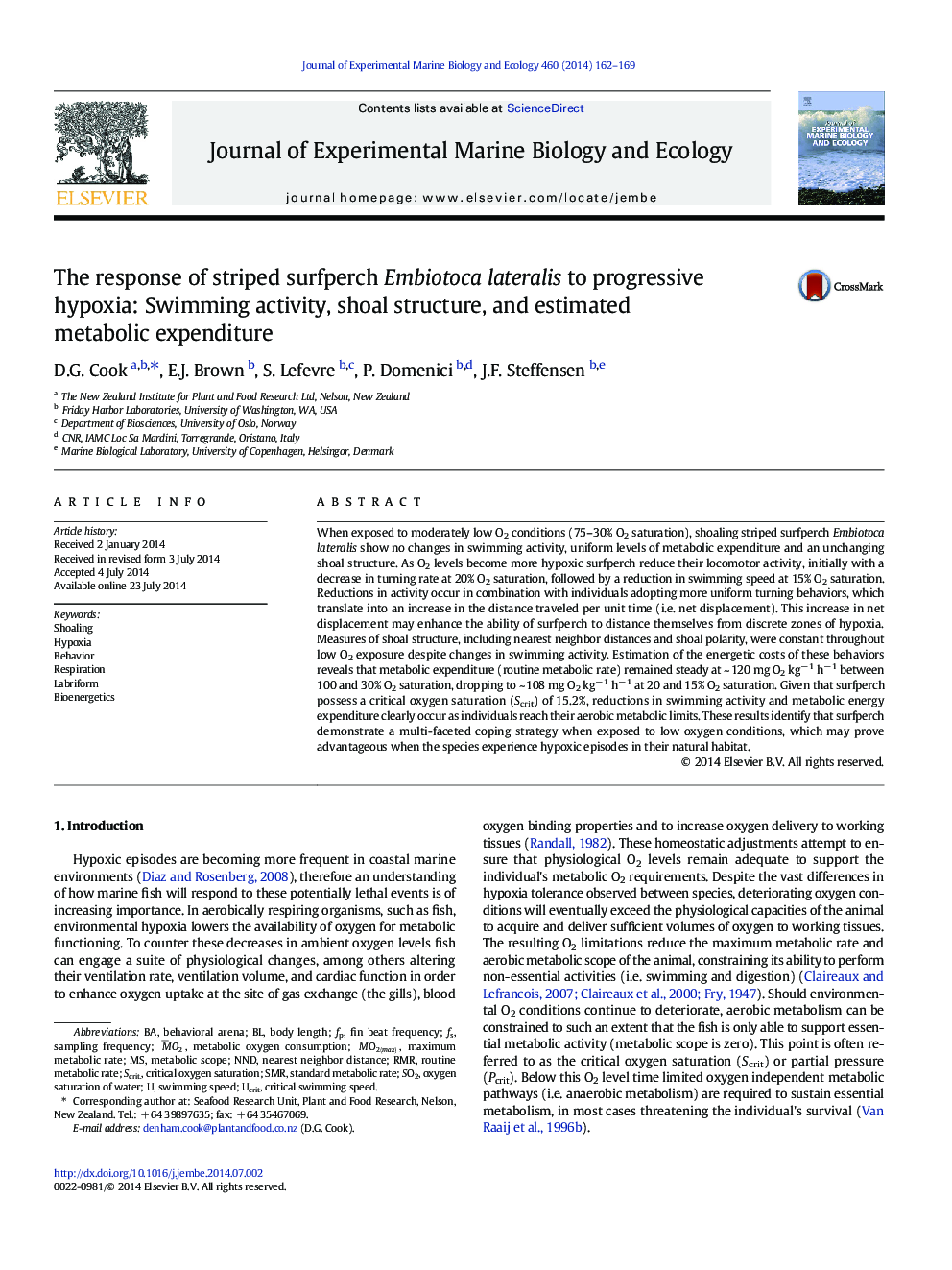| Article ID | Journal | Published Year | Pages | File Type |
|---|---|---|---|---|
| 6304080 | Journal of Experimental Marine Biology and Ecology | 2014 | 8 Pages |
â¢Striped surfperch show no behavioral response to moderately low O2 conditionsâ¢Striped surfperch only change their behavior as O2 levels drop below 30% saturationâ¢Changes in behavior include decreases in swimming speed and turning activityâ¢Shoal structure does not change at any level of hypoxia investigatedâ¢Changes in behavior occur as surfperch approach their aerobic metabolic limits
When exposed to moderately low O2 conditions (75-30% O2 saturation), shoaling striped surfperch Embiotoca lateralis show no changes in swimming activity, uniform levels of metabolic expenditure and an unchanging shoal structure. As O2 levels become more hypoxic surfperch reduce their locomotor activity, initially with a decrease in turning rate at 20% O2 saturation, followed by a reduction in swimming speed at 15% O2 saturation. Reductions in activity occur in combination with individuals adopting more uniform turning behaviors, which translate into an increase in the distance traveled per unit time (i.e. net displacement). This increase in net displacement may enhance the ability of surfperch to distance themselves from discrete zones of hypoxia. Measures of shoal structure, including nearest neighbor distances and shoal polarity, were constant throughout low O2 exposure despite changes in swimming activity. Estimation of the energetic costs of these behaviors reveals that metabolic expenditure (routine metabolic rate) remained steady at ~ 120 mg O2 kgâ 1 hâ 1 between 100 and 30% O2 saturation, dropping to ~ 108 mg O2 kgâ 1 hâ 1 at 20 and 15% O2 saturation. Given that surfperch possess a critical oxygen saturation (Scrit) of 15.2%, reductions in swimming activity and metabolic energy expenditure clearly occur as individuals reach their aerobic metabolic limits. These results identify that surfperch demonstrate a multi-faceted coping strategy when exposed to low oxygen conditions, which may prove advantageous when the species experience hypoxic episodes in their natural habitat.
